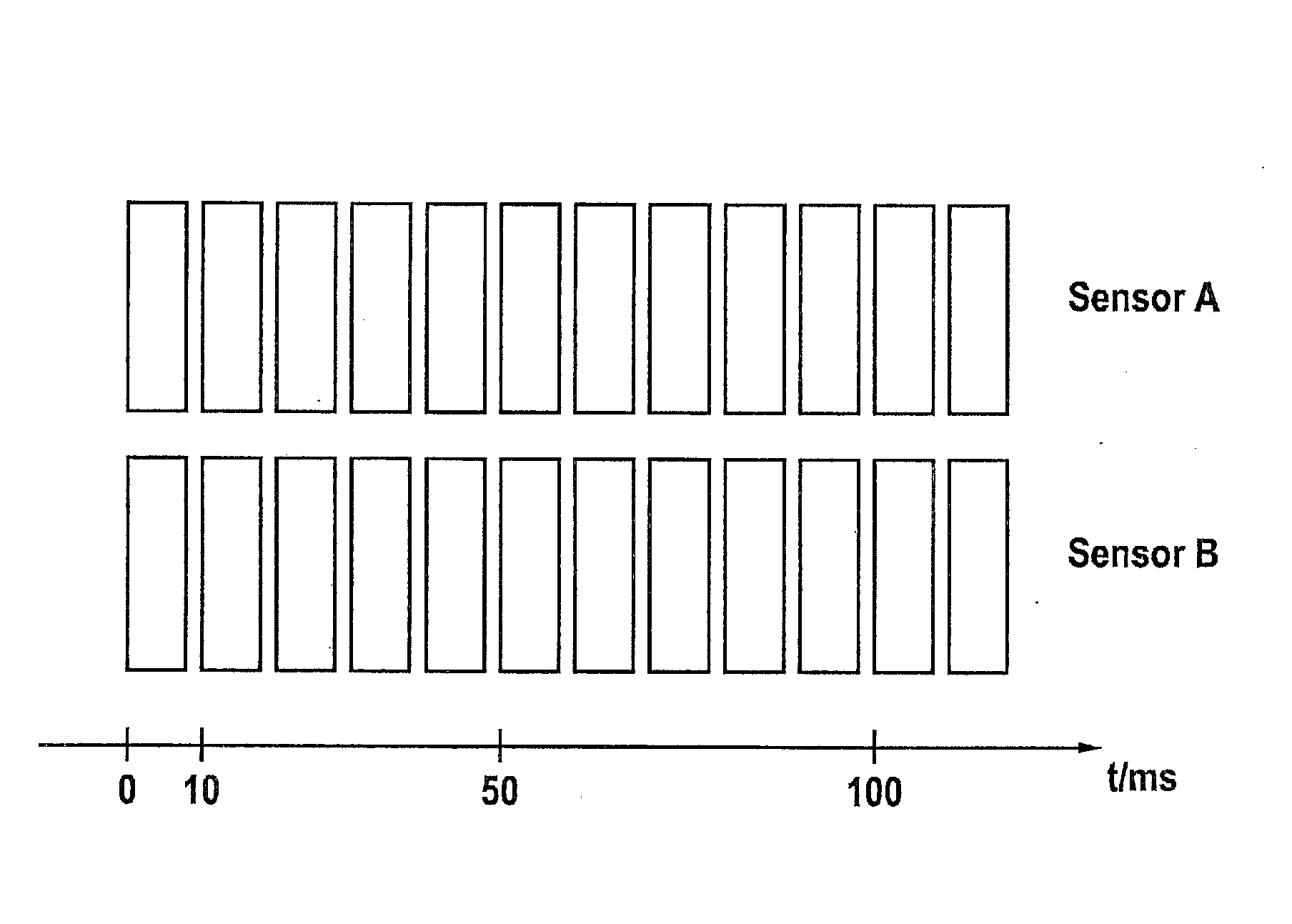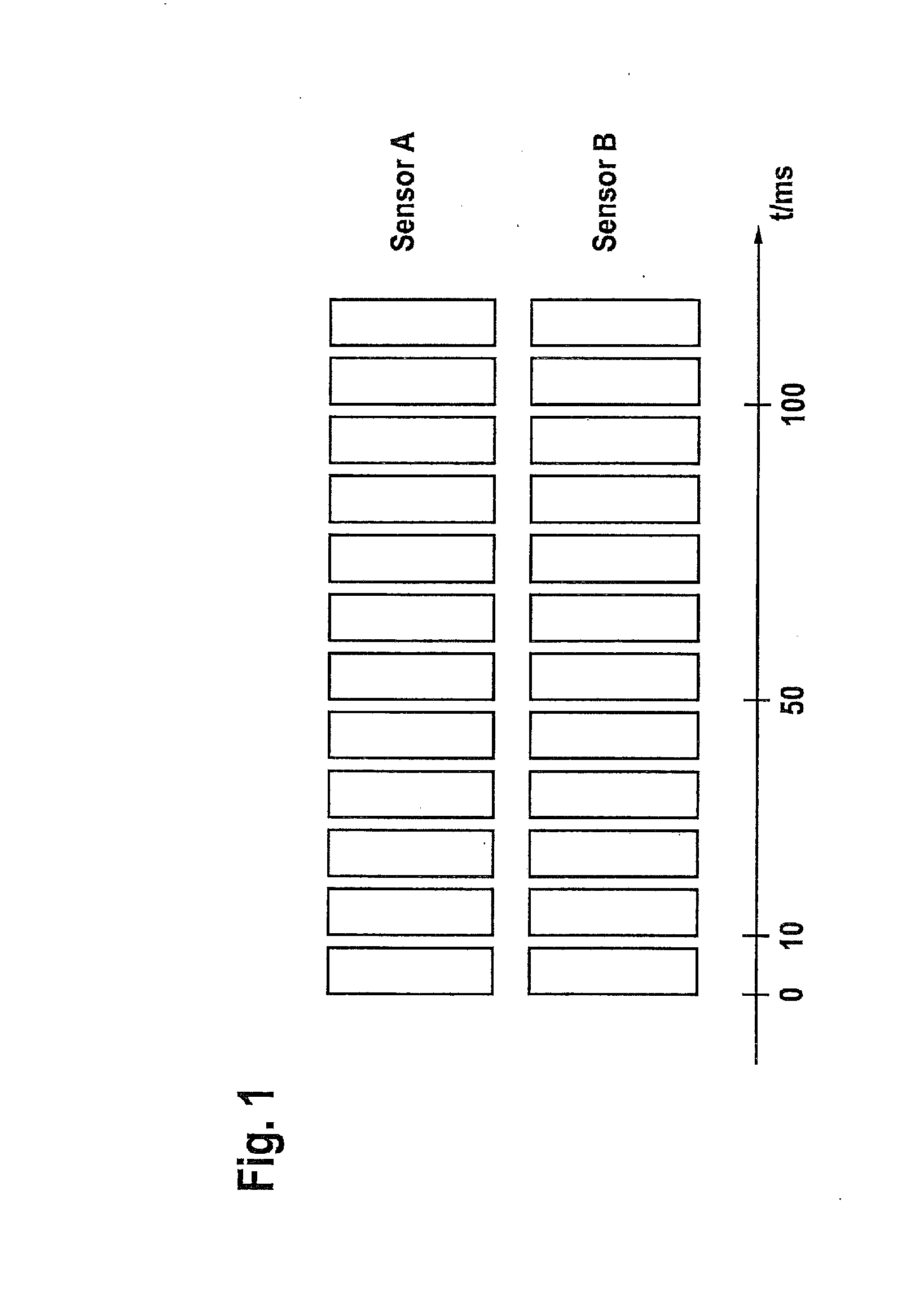Sensor time synchronization
- Summary
- Abstract
- Description
- Claims
- Application Information
AI Technical Summary
Benefits of technology
Problems solved by technology
Method used
Image
Examples
Embodiment Construction
[0030]FIG. 5 shows a sensor having two externally accessible sample timer and sample counter registers. It is known in the related art that one may provide sensors with a sample counter, in order to measure the time between data samples. For this purpose, the sample counter is available internally in the sensor. In the non-published German Patent Application DE 102012207026.5, a sensor is described which includes a sample timer register and a sampler counter register, as is shown in FIG. 5. The sample timer register includes the time period within a sample and is reset at the beginning of each new sample. The sample counter register counts the samples. The content of these two registers forms the sensor time, and is accessible from the outside, for instance, by a control unit. The sensor allows the control unit to read out the sensor time. From this, the control unit is able to assign to each sample of the data output of the sensor an accurate time stamp.
[0031]FIG. 6 shows a sensor ...
PUM
 Login to View More
Login to View More Abstract
Description
Claims
Application Information
 Login to View More
Login to View More - R&D
- Intellectual Property
- Life Sciences
- Materials
- Tech Scout
- Unparalleled Data Quality
- Higher Quality Content
- 60% Fewer Hallucinations
Browse by: Latest US Patents, China's latest patents, Technical Efficacy Thesaurus, Application Domain, Technology Topic, Popular Technical Reports.
© 2025 PatSnap. All rights reserved.Legal|Privacy policy|Modern Slavery Act Transparency Statement|Sitemap|About US| Contact US: help@patsnap.com



